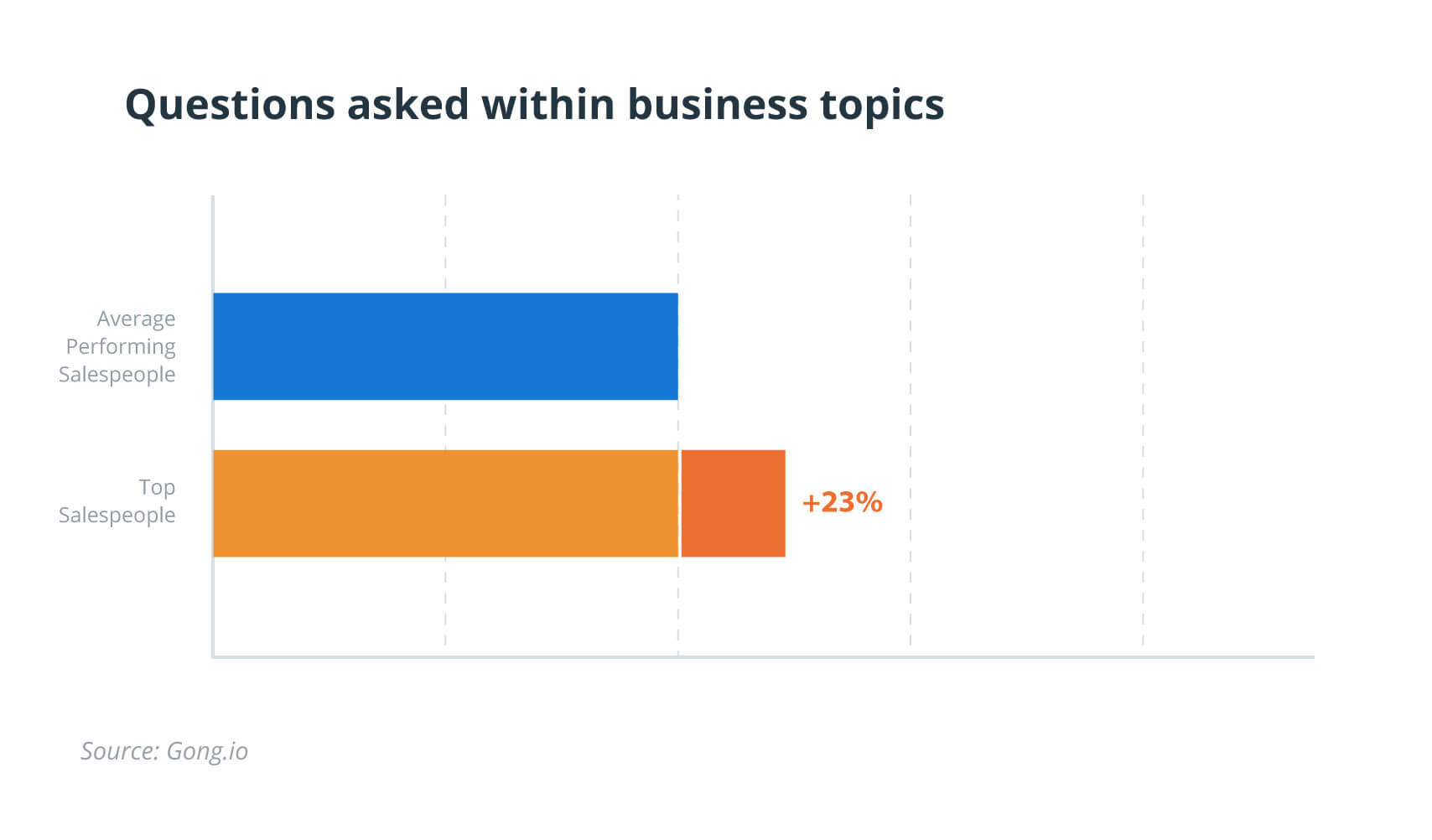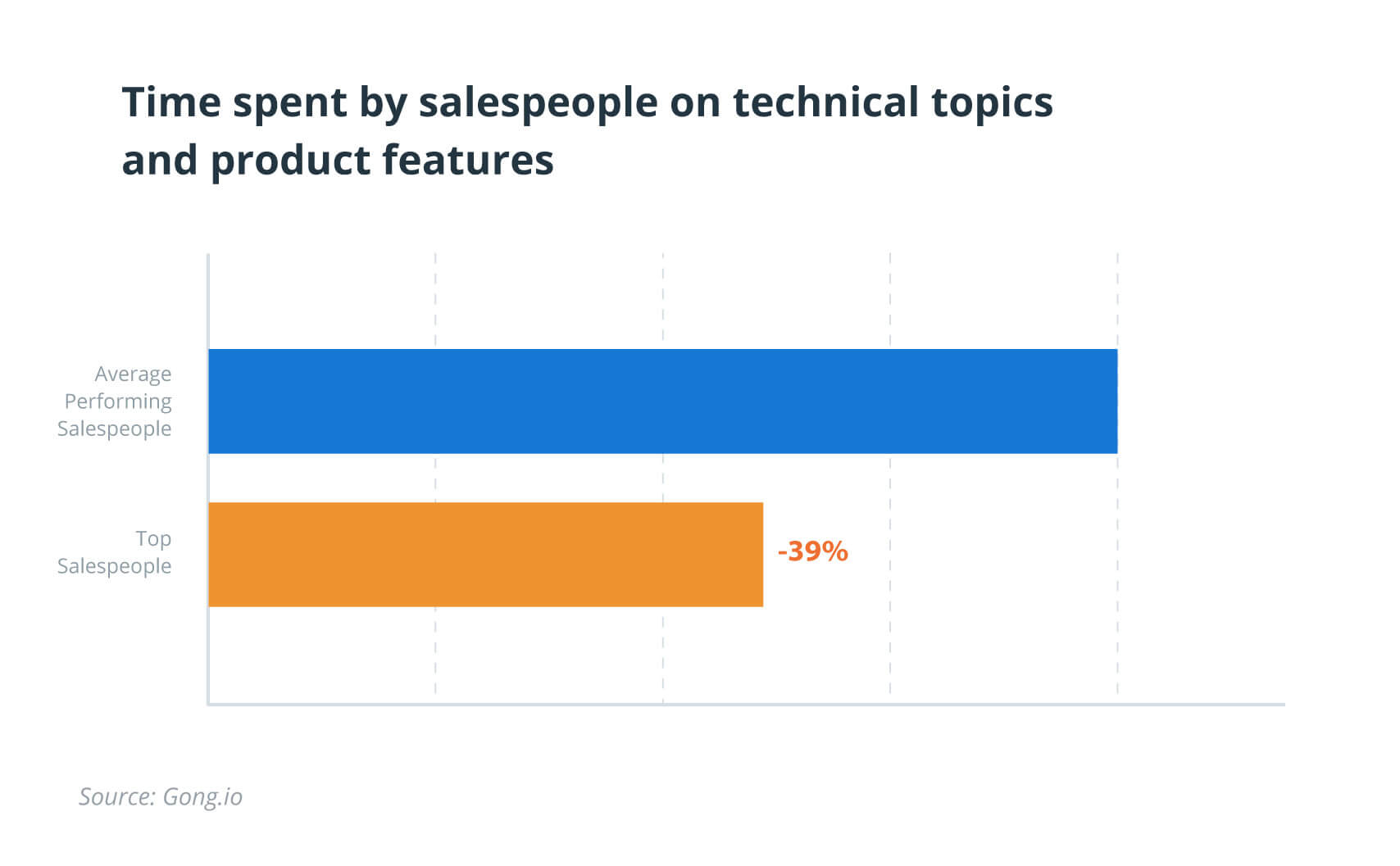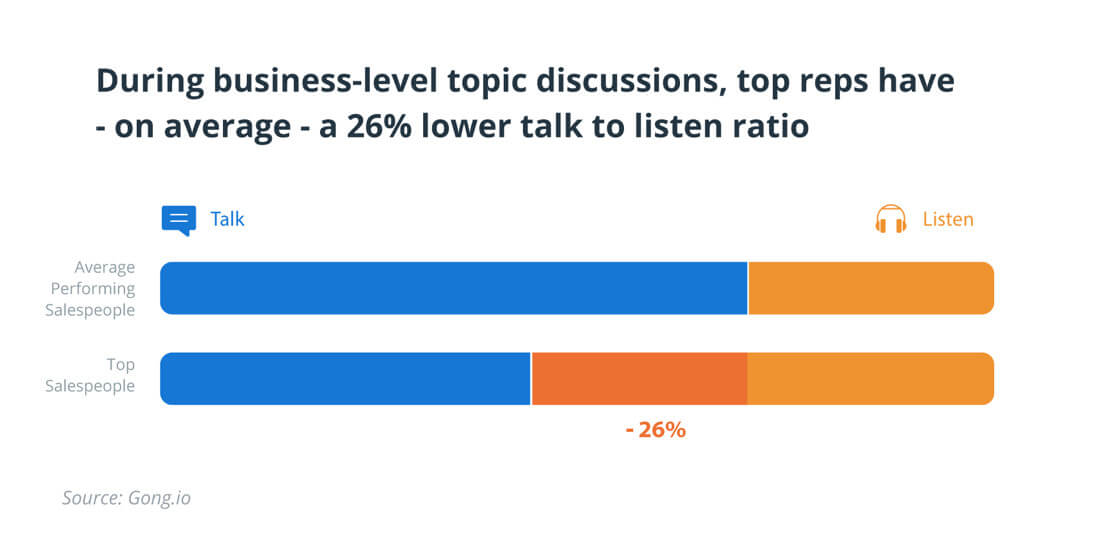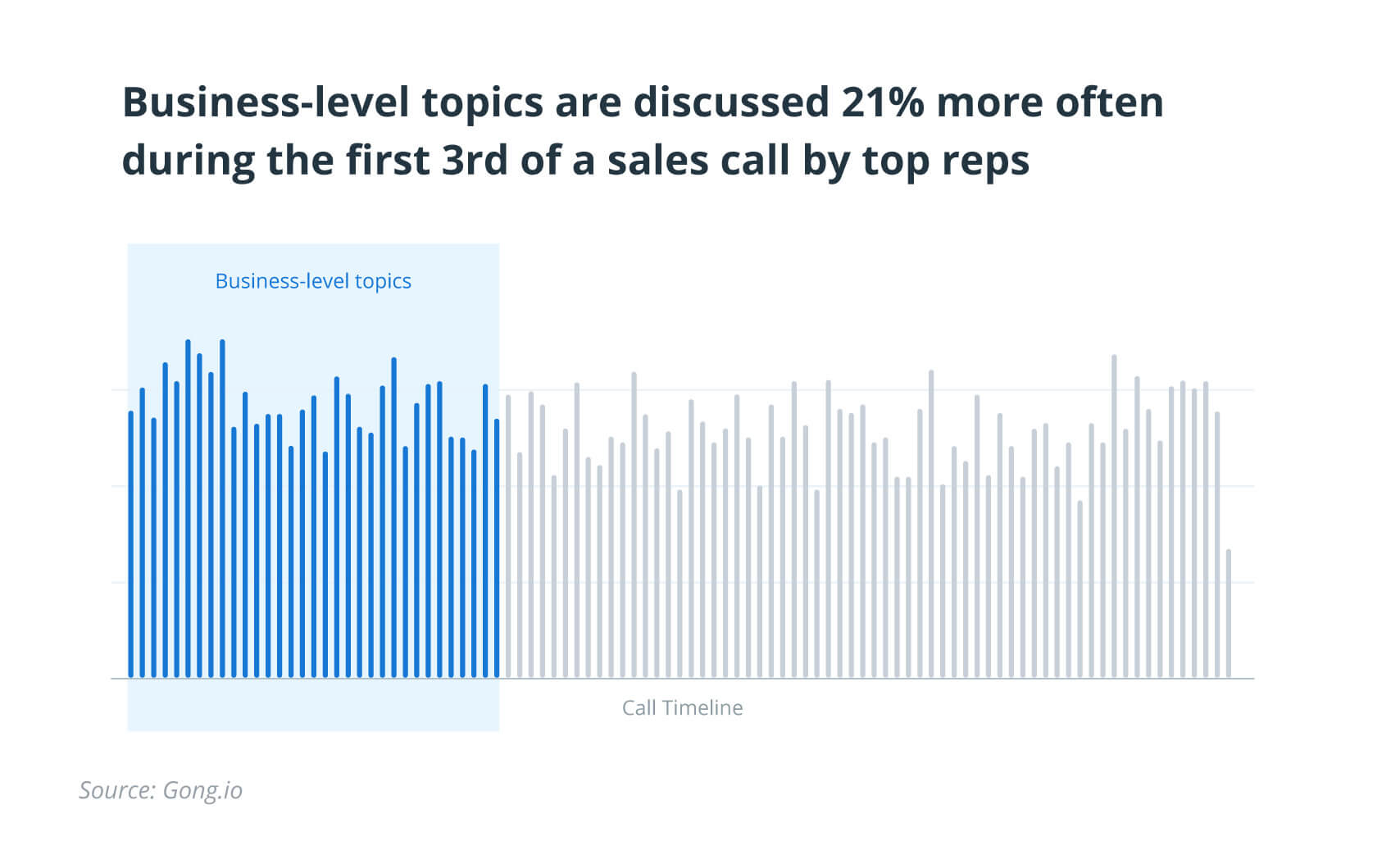Sales reps at the top of the leaderboard talk about the business value of their offerings far more than product features or technical details.
That’s no secret.
What’s less known is that coaching a struggling rep to go from one to the other is the most decisive factor in helping them rise through the ranks.
It’s the most impactful thing you can do in helping them go from “average” to “top producer.”
Let me explain.
To date, our data science team at Gong.io has analyzed almost one million sales calls.
This task is done with unsupervised machine learning.
These are calls that have been recorded via web conferencing…
Transcribed from speech to text…
And analyzed to detect key patterns.
The machine learning teases out the specific topics that were discussed…
Along with the duration and time window each topic was discussed (for example, between the 20-24 minute window).
Sales reps with the best numbers on the leaderboard spend a whopping 52% more time discussing business- and value-related topics during their calls than their “average” teammates:

Examples of topics that fall into the “business- and value-related” category are…
- Return on investment.
- The prospect’s business environment and specific challenges.
- Project agenda, timeline, decision-making ecosystem.
- Implementation and ongoing support.
- “Value topics” rather than “Feature topics” (For example, “Coaching” vs. “Artificial Intelligence.” One is a value. The other a feature).
These same “number-crushing” sales reps spend 39% less time than their peers discussing technical- and feature-related topics.

This leads me to the main point of this article.
We kept track of every reps’ rank on the leaderboard during this analysis (anonymously).
We looked at who was in 1st place, 2nd place, and so on.
And we kept track of leaderboard movement.
Who was moving up the leaderboard, and what were their commonalities?
Lo and behold, we found a correlation.
Reps that moved up the rungs (almost) all followed one pattern:
They reduced the amount of time they spent discussing technical- and feature-related topics, and increased the amount of time they spent discussing business- and value-related topics.

This wasn’t the only factor in rising through the ranks.
But it was the most decisive.
Here’s How to Pull This Off
The trouble with this knowledge is that “talking business” looks really easy.
But It’s an incredibly difficult skill in reality.
“Sales reps” must transform into “business people.”
If you’re a manager, your reps are going to need skillful coaching and guidance from you to make the leap.
That said, here are a few practical tips to get started.
Ask More (Targeted) Questions
Top salespeople ask 23% more “business- and value-related questions” than their peers:

The frequency of questions asked about a topic is directly correlated with time spent discussing that topic.
But you have to ask targeted, thoughtful questions.
None of this “What keeps you up at night?”
That requires zero business acumen or domain expertise to ask.
Instead, ask questions that target a specific area or pain point.
Ask questions that demonstrate domain expertise.
“What percentage of your reps are exceeding quota, and what’s causing the others to fall short from your perspective?”
As a result of asking thoughtful questions, star sales reps have a 26% lower talk-to-listen ratio than their peers when discussing business- and value-related topics.

This is despite the fact that they spend more time on with their prospects discussing these topics.
Address Value- and Business-Level Topics Early On
Top-ranked reps discuss business-level topics 21% more often during the first third of their sales calls.
It’s as if they prioritize the conversation.
They address business issues and value-related topics early on, making sure they have time to thoroughly cover them.

The takeaway is simple.
Lead and direct the conversation. Begin with the end in mind.
Stay out of the weeds at the beginning.
If that happens, redirect.
Stay in control.
Save the minutiae for later.
Become a Businessperson, Not a Salesperson
I must admit, this is a long-term project rather than a quick tip.
But it could be the most valuable takeaway of this post.
From your buyer’s perspective, there are only two types of salespeople.
Competent, and incompetent.
Their definition of “competence” is likely very different than yours.
Competence – to a sales professional – means you’re persuasive, you ask great questions, and make compelling presentations.
But buyers aren’t evaluating your level of sales competence.
They’re evaluating your level of business competence.
They’re wondering, “Do you really understand how my business works?”
“Or are you just well-trained in the Sandler method?”
Are you able to speak the language of multiple stakeholders and departments?
Do you know how a business, as a machine, operates?
Here’s my challenge to you…
Dedicate the next three years to becoming a full-fledged business person.
Gain new experiences in other areas of the business.
Read sales books.
Commit to this, and you’ll wake up in a few years the one-eyed man in the land of the blind.
Managers: Your Reps Need You In the Quest of Rising through the Sales Leaderboard
Those are all the stats and tips I have until next time.
Here’s the final thought I’d like to leave you with…
Sales managers are going to have to take an active role in helping their reps make this leap.
Like I said before, talking intimately about business value is a difficult skill.
One that requires the right coaching and guidance to develop.
Managers will have to take on the task of diagnosing each reps’ areas of improvement, along with showcasing examples to emulate.
Both of which are most effectively done when your team’s sales conversations are made visible and transparent.
To understand why you need visibility into your team’s sales conversations to make this transformation, check out this post.

